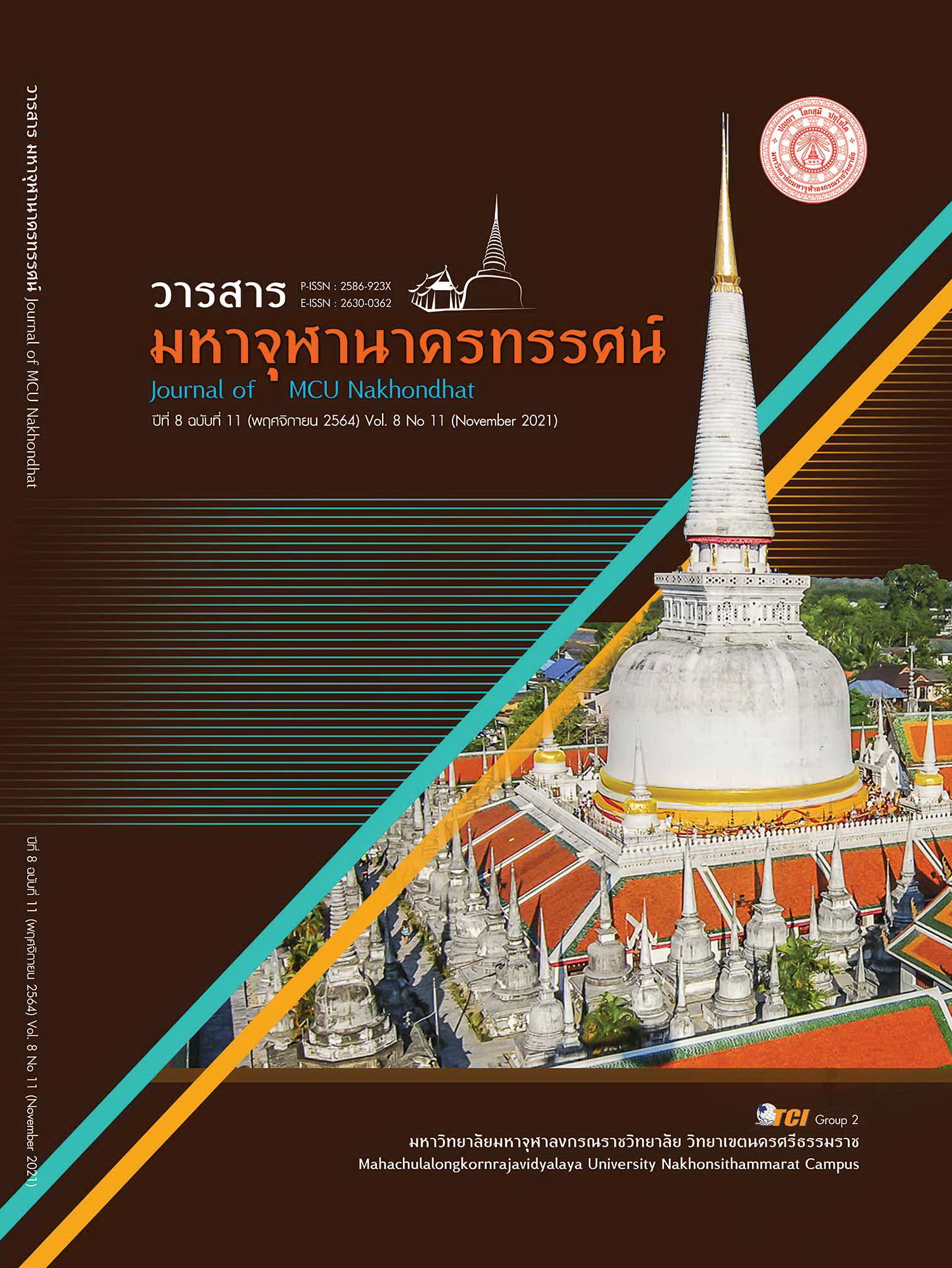THE DEVELOPMENT OF NURSE INSTRUCTORS’ POTENTIAL TO ACADEMIC SERVICE-RELATED RABIES PREVENTION IN COMMUNITY
Main Article Content
Abstract
Rabies is a public health problem that can be life threatening. Professor Dr. Her Royal Highness Princess Chulabhorn Krom Phra Srisavangavadhana care people of Thailand and effort to make Thailand rabies-free. Therefore, the government is a project for Saving Animals and Human Lives from Rabies. Boromarajonani College of Nursing Nakhon Si Thammarat is an institution of higher education under the Praboromrajchanok Institute that focuses on the development of nurse instructors’ potential by bringing experiences from academic service in the community to the development of teaching and learning to be sustainable in terms of health. Therefore, The College of Nursing has organized a Saving Animals and Human Lives from Rabies to develop the expertise of nursing instructors in academic matters and their competence in academic service in the community. Guidelines for developing nursing instructors' potential in academic services related to rabies prevention from the study of people's needs and the incidence of rabies in order to plan the implementation of academic services and training to provide up-to-date knowledge. After that, teachers who have been trained to transfer knowledge and other teachers to exchange knowledge from the review of relevant research literature and practical experience until becoming a new set of knowledge that is suitable for transferring to the people in the area. Then, a team of teachers meeting before providing academic services. After providing academic services, Teachers reflect and take lessons learned in order to extract knowledge and exchange knowledge of the benefits received and strengths and weaknesses of academic service to improve the next academic service with better quality.
Article Details
References
กรมควบคุมโรค. (2559). แนวทางปฏิบัติโรคพิษสุนัขบ้า และคำถามที่พบบ่อย (พิมพ์ครั้งที่ 5). กรุงเทพมหานคร: อักษร กราฟฟิคแอนด์ดีไซน์.
กรมควบคุมโรค. (2562). กรมควบคุมโรค เผยพบผู้เสียชีวิตจากโรคพิษสุนัขบ้า 1 ราย แนะประชาชนขอให้ยึดหลัก “คาถา 5 ย. ลดความเสี่ยงการรับเชื้อ. เรียกใช้เมื่อ 18 มีนาคม 2564 จาก https://ddc.moph.go.th/brc/news.php?news=9839&deptcode =brc
ดวงกมล หน่อแก้ว. (2557). การพัฒนาคุณลักษณะอาจารย์พยาบาลเพื่อมุ่งสู่องค์กรแห่งการเรียนรู้ของวิทยาลัยพยาบาลในสังกัดสถาบันพระบรมราชชนก. วารสารพยาบาลกระทรวงสาธารณสุข, 24(1): 80-91.
ธีระชล สาตสิน. (2563). การดูแลผู้สัมผัสโรคพิษสุนัข : บทบาทของพยาบาลวิชาชีพแผนกฉุก. วชิรสารการพยาบาล, 22(1), 92-103.
มัลลิกา เกตุชรารัตน์ และคณะ. (2558). การศึกษาสมรรถนะที่พึงประสงค์ของอาจารย์ในมหาวิทยาลัยเกษตรศาสตร์. วารสารครุศาสตร์, 43(1), 112-127.
สถาบันพระบรมราชชนก. (2563). คู่มือการติดตาม ประเมินผลการดำเนินงานด้านการบริการวิชาการตามแผนยุทธศาสตร์ สถาบันพระบรมราชชนก ปีงบประมาณ 2563-2567. ใน กองบริการวิชาการ สถาบันพระบรมราชชนก. นครศรีธรรมราช.
สภากาชาดไทย. (2561). แนวทางการดูแลรักษาผู้สัมผัสโรคพิษสุนัขบ้า. สถานเสาวภา สภากาชาดไทย พ.ศ.2561และคำถามที่พบบ่อย. คลินิกป้องกันโรคพิษสุนัขบ้า สถานเสาวภา สภากาชาดไทย. กรุงเทพมหานคร: เพนตากอน แอ็ดเวอร์ไทซิ่ง.
สัตวแพทยสภา. (2561). คู่มือเวชปฏิบัติเรื่องโรคพิษสุนัขบ้า. คณะอนุกรรมการจัดทำคู่มือเวชปฏิบัติเรื่องโรคพิษสุนัขบ้า สัตวแพทยสภา. กรุงเทพมหานคร: กรมปศุสัตว์ กระทรวงเกษตรและสหกรณ์.
สำนักงานสาธารณสุขจังหวัดพัทลุง. (2562). สรุปผลการดำเนินงาน ปีงบประมาณ พ.ศ. 2562 เรื่องระดับความสำเร็จของการเฝ้าระวังป้องกันควบคุมโรคพิษสุนัขบ้าสำหรับประชาชนในพื้นที่เสี่ยง. เรียกใช้เมื่อ 18 มีนาคม 2564 จาก http://data.ptho.moph.go.th/inspec/s_report62/3.1.10_%E0%B8%9E%E0%B8%B4%E0%B8%A9%E0%B8%AA%E0%B8%B8%E0%B8%99%E0%B8%B1%E0%B8%82%E0%B8%9A%E0%B9%89%E0%B8%B2.pdf
Rangel, S. S., et al. (2020). Rabies encephalitis and extra-neural manifestations in a patient bitten by a domestic cat. Retrieved March 5, 2563, from https://doi.org/10.1590/S1678-9946202062001
World Health Organization. (2017). Towards a rabies-free Thailand by 2020. Retrieved March 18, 2021, from https://www.who.int/news-room/feature-stories/detail/towards-a-rabies-free-thailand-by-2020
World Health Organization. (2021). Rabies. Retrieved March 18, 2021, from https://www.who.int/rabies/epidemiology/en/


